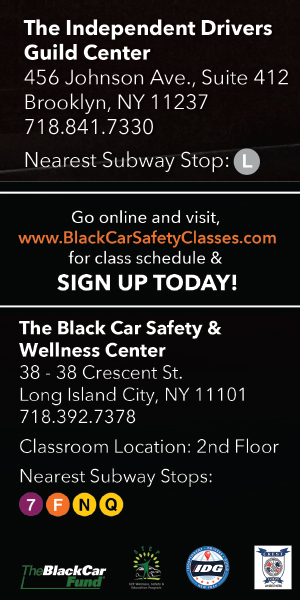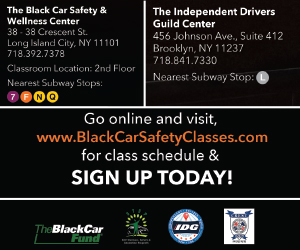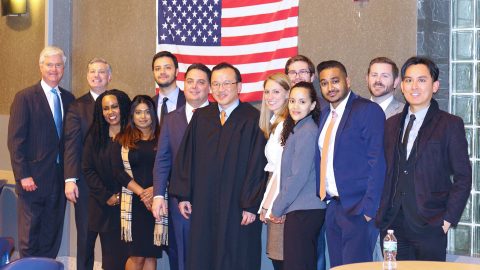Before I launch into details about what 2018 is already bringing to our industry, I want to wish all of our readers – and their families – a Happy, Safe and Healthy New Year!
The past few years have had some rough moments for Black Car bases and drivers, and I know I’m not alone in wishing that the months ahead bring more stability… and hopefully (fingers crossed) less traffic.
TLC Passes WAV Rules
Just before the year ended, I’m sorry to say the NYC TLC passed the For-Hire Vehicle WAV rules that have been the focal point of my past few editorials. I honestly can’t remember seeing a piece of legislation with the potential to do more damage, without accomplishing its stated task – in this case, to provide better service to those requiring Wheelchair Accessible Vehicles.
The FHV Coalition – comprised of representatives from all segments of the industry – developed a far more logical plan, built from the ground up by people who actually have an intimate knowledge of providing transportation services in NYC. But, the TLC stubbornly decided to move forward with its own plan anyway.
The TLC is allowing the FHV Coalition plan to move forward simultaneously, but there are enough “poison pills” built into the TLC’s final set of rules that it’s clear they don’t want the Coalition’s plan to make it very far out of the starting gate.
If their real desire is to provide better service to people requiring WAVs, why would the TLC pass a splintered mess, which will waste millions of dollars, pit segments of the industry against each other and doom versions other than their own to failure?
As participants struggle to decide which version best suits their individual business model, and move forward into the unknown, every misstep along the way will have a negative impact on service levels for the people this is supposedly meant to help. Plain. And. Simple.
The FHV Coalition planned to build a central dispatch system and promised quick and easily-accessible service for those requiring WAVs, but the TLC’s rules will only serve as a monkey wrench. What company would want to spend the millions of dollars required to set up a dispatch system and call center, let alone a mechanism to manage what will surely be a complicated undertaking, when the TLC can just pull the rug out on a whim?
Despite the mess that TLC seems intent on making, Coalition leaders have promised to continue trying to negotiate for the best possible solution – but in the meantime, a substantial war chest has been built up to litigate in the courts, if necessary.
Over the past few years, on numerous occasions, industry leaders have expressed concerns that steps being taken by the TLC rule would trigger an industry-wide collapse, but this time it’s not a drill. We have seen quite a few businesses go under thanks to TLC policies, but this new FHV WAV rule truly has the potential for the complete and utter destruction of an industry that has been built up over the course of many decades.
If a reasonable pilot program can’t be negotiated, and the FHV Coalition is unsuccessful in litigating a better system, I just don’t know who among the traditional Black Car bases can possibly survive this. Ironically, only Uber and Lyft have deep enough pockets – and they are the companies WAV advocates were targeting when all of this started. WAV advocates basically said they just wanted Uber and Lyft to pull their weight, considering the volume of rides they do in the city, but now they could very well end up being the only ones left standing if the TLC has its way.
Things are going to move quickly since the TLC passed their rules on December 13, and the Coalition only has 120 days from that date to sue the city – so buckle up.
Congestion Pricing
In a surprising turn of events, the member bases in the Black Car Assistance Corporation (BCAC) have decided to support a version of “congestion pricing” that they hope will reduce traffic in NYC. Traffic has gotten so bad in recent years, it actually now makes sense, assuming a version goes into effect that is fair and equitable across all segments of the industry.
The logic: If a small per-trip fee helps unclog traffic in the city, drivers will actually be able to complete more trips and earn more as a result.
The BCAC’s plan would include a flat, per-ride fee, with different amounts (somewhere between half-a-buck and a couple dollars) for different types of rides. There would be one fee for point-to-point trips in the Central Business District (CBD), a different fee for trips that are either a pick up or drop-off in the CBD, a smaller fee for trips in Manhattan outside of the CBD and an even smaller fee for trips in the outer boroughs.
The money would go to the MTA to improve public transportation, further reducing car traffic. The BCAC’s endorsement of this plan is conditional on also getting rid of the sales tax currently being charged on Black Car trips.
As you can tell, there is a lot going on, and 2018 is off to crazy start already. I urge everyone to follow us on Facebook, get added to our email list and visit our website regularly. Our website, www.blackcarnews.com, will be getting a facelift in the first quarter of 2018, and will feature breaking news items, which will be updated as they occur.
Please don’t hesitate to email me directly at neil@blackcarnews.com with any questions, call 856.751.0656 or check our newly renovated site for up-to-the-minute news and advertising opportunities, something we previously had not done at www.blackcarnews.com.




